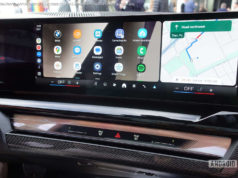Google’s newest flagship Pixel 9 Pro packs massive upgrades and features unseen on older generations. As a Pixel 7 Pro user, should you upgrade? Find out here!
Over the years, Google has kept us yearning for a true iPhone contender. And it finally comes true with the Google Pixel 9 Pro, which brings a host of compelling changes over the last year’s Pixel 8 Pro. The gap further widens when we compare it to the Pixel 7 Pro.
The Pixel 9 Pro appears better than the Pixel 7 Pro in almost every regard. Does that mean you should upgrade to the new phones — plural since it now comes in two sizes? That’s exactly what we will answer in this article.
Before we do that, here’s a quick gist of what the new Pixel 9 Pro and the Pixel 9 Pro XL bring to the table when compared to the Pixel 7 Pro.Google Pixel 9 Pro vs. Pixel 7 Pro: specsGoogle Pixel 9 Pro vs. Pixel 7 Pro: design
The entire Pixel 9 series brings major design changes over the previous generations. Foremost, it’s important to point out that the Pixel 9 series is slightly more diverse than earlier models; the Pixel 9 Pro comes with in two sizes — one with a 6.3-inch display and an XL with a 6.8-inch display. For sake of simplicity, we will refer to both as the Pixel 9 Pro unless there are specific differences to highlight.
As stated in our Pixel 9 Pro XL review, the new phones bring a complete design overhaul, and feel like a massive upgrade. The newer design comprises rounder elements, a flat mid-frame, and uniform colors on the sections of metal and glass.
The Pixel 7 Pro felt equally enticing at the time of its launch. The interplay of dual tones, especially with the golden accents on the Hazel green back, seem charming. However, as with everything, fading novelty can create a gap for more modern designs, and the Pixel 9 Pro fits right in.
While Google goes for rounder corners than the Pixel 7 Pro, the curved edges on the back and the screen have been replaced, following other premium phones such as the Galaxy S24 and the iPhone 15 Pro Max. How that affects usability may be subjective, but the Pixel 9 Pro looks fresher as a result.
The finish of the design is as top-notch as it was back then, so we wouldn’t really stress much about it. A bonus point goes to the Pixel 9 Pro for using the newer Corning’s Gorilla Glass Victus 2. There are no cutbacks in durability, and all the new Pixel phones retain IP68 certification for protection against dust and water.
The newer Pixel 9 Pro gets a lighter, more ergonomic footprint if you want the same features in a smaller size. Meanwhile, the Pixel 9 Pro XL offers some benefits, including a larger display as big as the Pixel 7 Pro’s. If a bigger display is your priority, the next section details all the ways it has changed since the Pixel 7 Pro.Google Pixel 9 Pro vs. Pixel 7 Pro: display
The Pixel 9 Pro series gets two options for display sizes — a smaller 6.3-inch display on the Pro and a larger 6.8-inch display on the Pixel 9 Pro XL. The former is similar to the standard Pixel 9, while the latter is identical to the Pro variants in previous generations of Pixel phones.
That means if you have the Pixel 7 Pro and are looking to upgrade to a similarly large-sized phone, the Pixel 9 Pro XL makes more sense. The smaller Pixel 9 Pro is ideal if you want the same features but in a lighter and more compact form. However, outside of the display sizes, the Pixel 9 Pro and the XL have the same features , so your decision can be based entirely on size.
As for other differences with the Pixel 7 Pro, the Pixel 9 Pro has a significantly brighter display that now goes up to 3,000 nits in peak brightness mode — compared to the 2,000 nits on the Pixel 7 Pro. The Pixel 7 Pro’s display already had a respectable number of details and vivid colors, and the Pixel 9 Pro’s Super Actua display doesn’t let us down in that regard. It’s still as outstanding as it was before.
While both sizes support different resolutions on the display, you can reduce it to 1080p, saving battery. You get LTPO tech underneath that allows for variable refresh rates, ranging between 1Hz and 120Hz.






